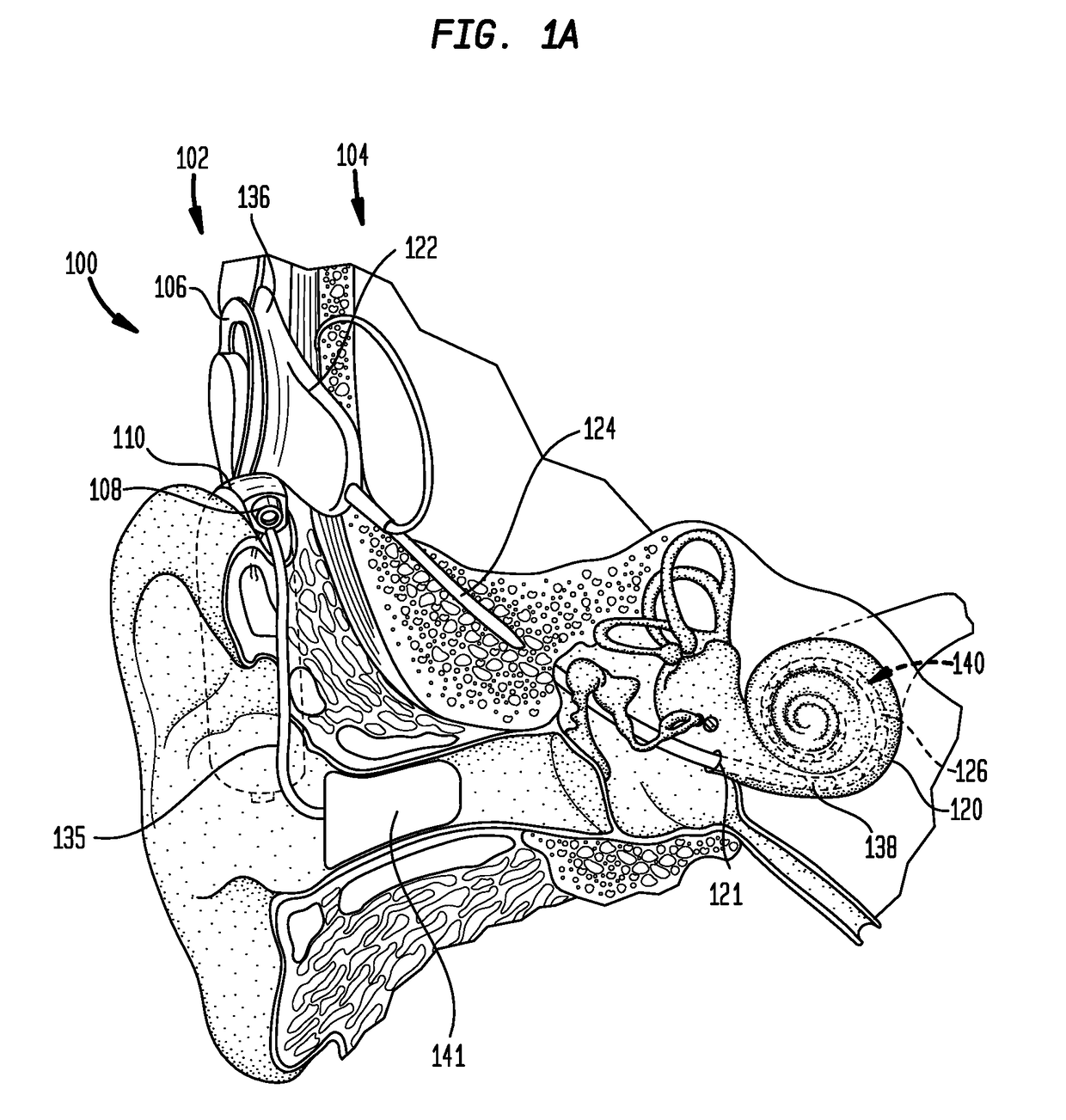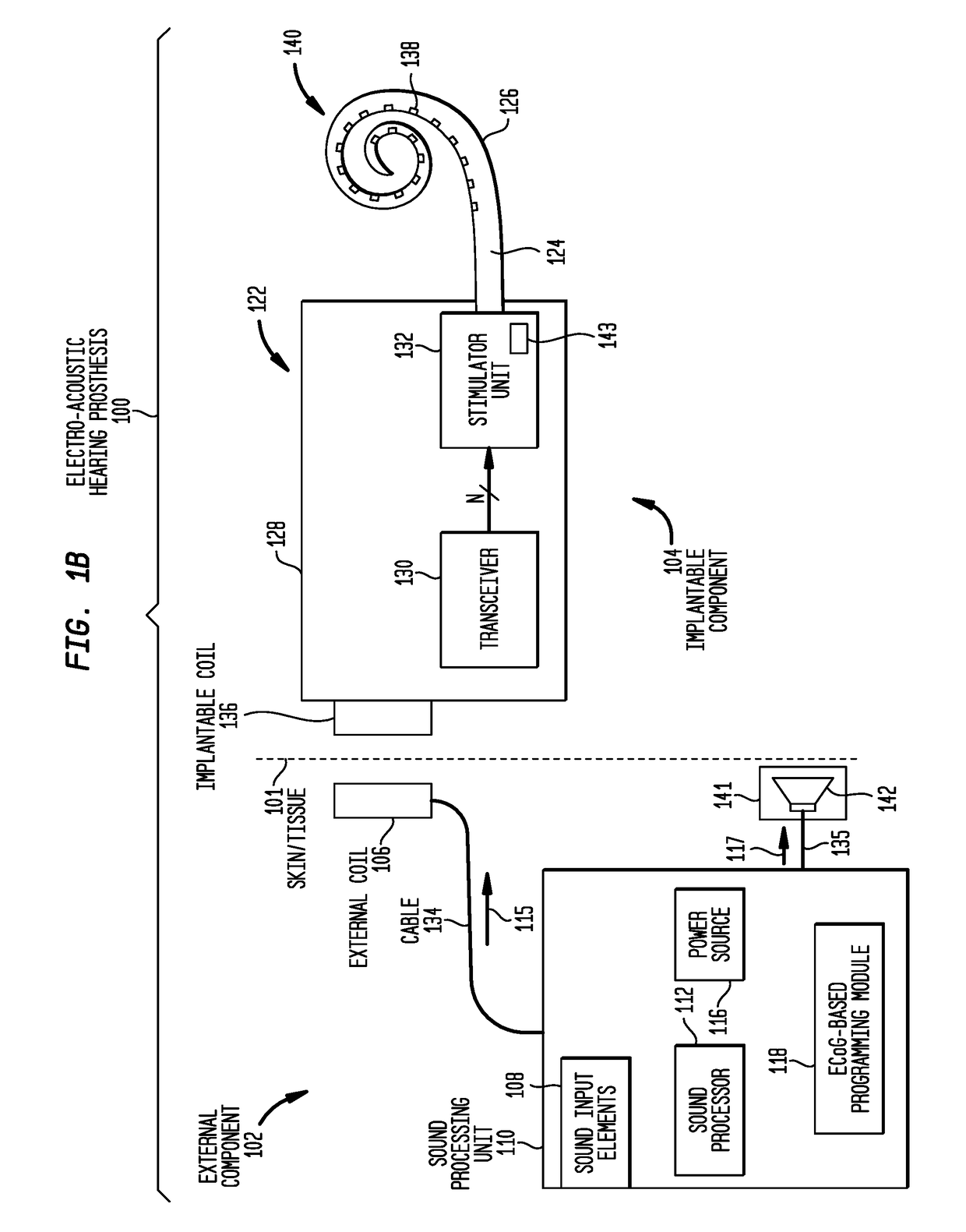Hearing prosthesis programming
a technology of hearing prosthesis and programming, applied in the field of hearing prosthesis, can solve the problems of conductive hearing loss, impeded normal mechanical pathways of the outer and/or middle ear, deafness is sensorineural hearing loss, etc., and achieve the effect of increasing the current level, and increasing the current level
- Summary
- Abstract
- Description
- Claims
- Application Information
AI Technical Summary
Benefits of technology
Problems solved by technology
Method used
Image
Examples
Embodiment Construction
[0018]Electrically-stimulating hearing prostheses, such as cochlear implants, electro-acoustic hearing prosthesis, auditory brainstem implants, etc., operate by converting at least a portion of received sound signals into electrical stimulation signals (current signals) for delivery to a recipient's auditory system. The window / range of electrical amplitudes (current levels) at which electrical stimulation signals may be delivered to the recipient's auditory system is limited. In particular, if the amplitude of the electrical stimulation signals is too low, then the associated sounds used to generate the electrical stimulation signals will not be perceived by the recipient (i.e., the stimulation signals will either not evoke a neural response in the cochlea or evoke a neural response that cannot be perceived by the recipient). Conversely, if the amplitude of the electrical stimulation signals is too high, then the associated sounds used to generate the electrical stimulation signals ...
PUM
 Login to View More
Login to View More Abstract
Description
Claims
Application Information
 Login to View More
Login to View More - R&D
- Intellectual Property
- Life Sciences
- Materials
- Tech Scout
- Unparalleled Data Quality
- Higher Quality Content
- 60% Fewer Hallucinations
Browse by: Latest US Patents, China's latest patents, Technical Efficacy Thesaurus, Application Domain, Technology Topic, Popular Technical Reports.
© 2025 PatSnap. All rights reserved.Legal|Privacy policy|Modern Slavery Act Transparency Statement|Sitemap|About US| Contact US: help@patsnap.com



